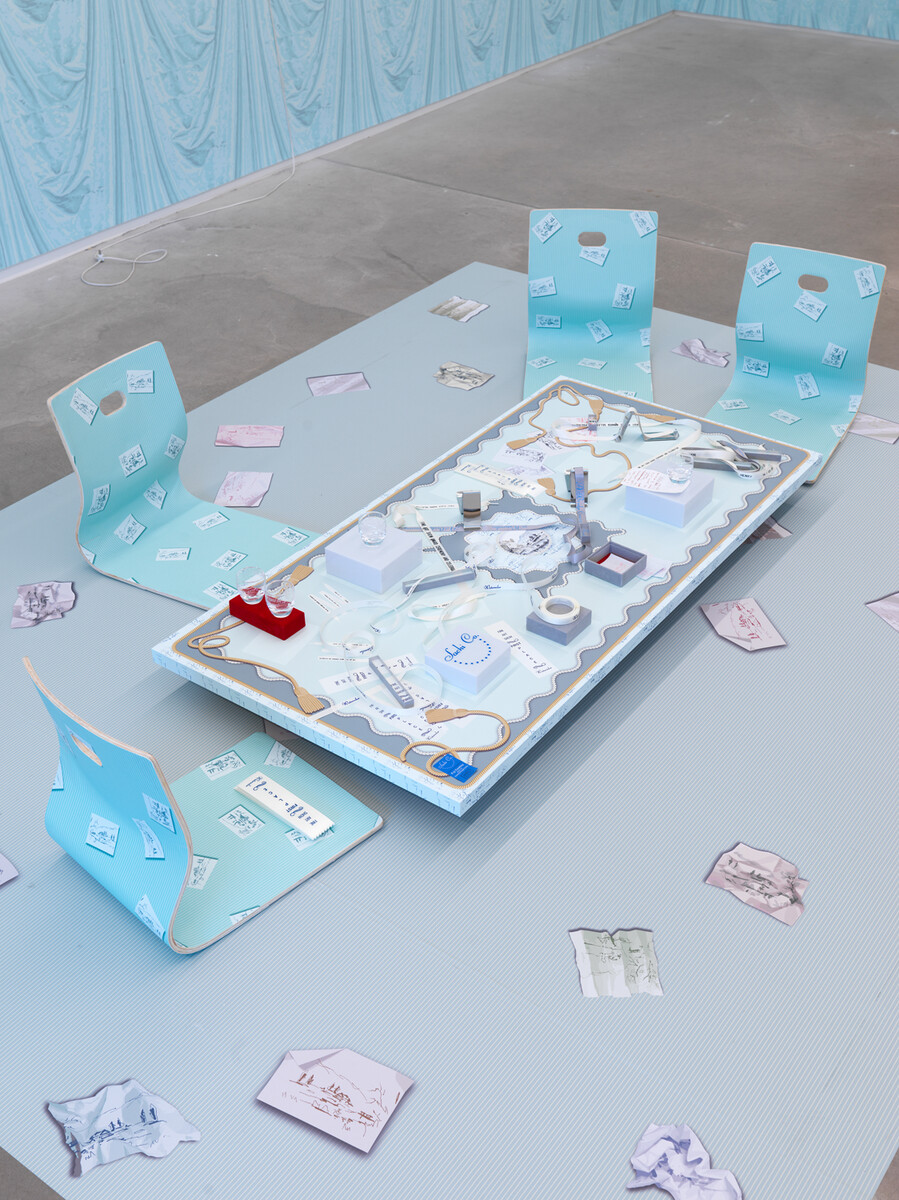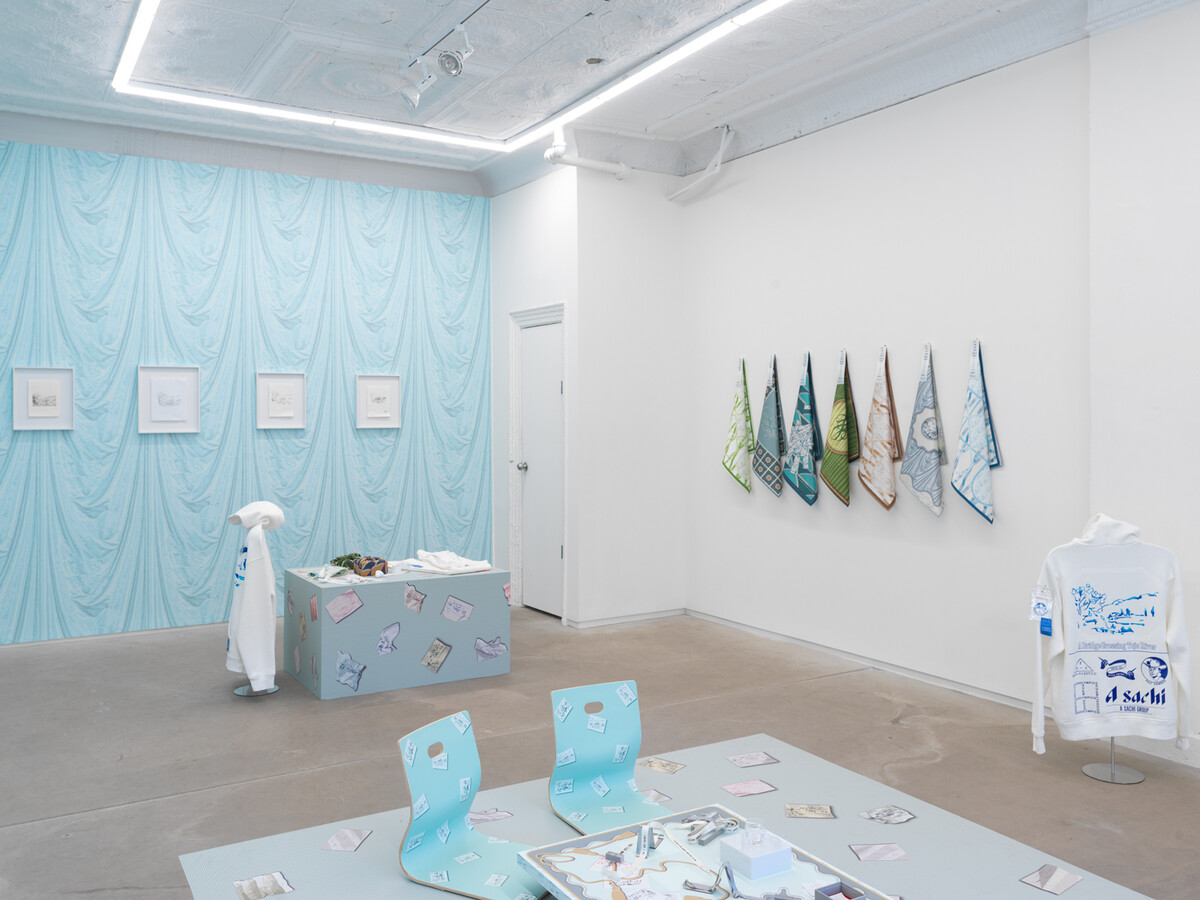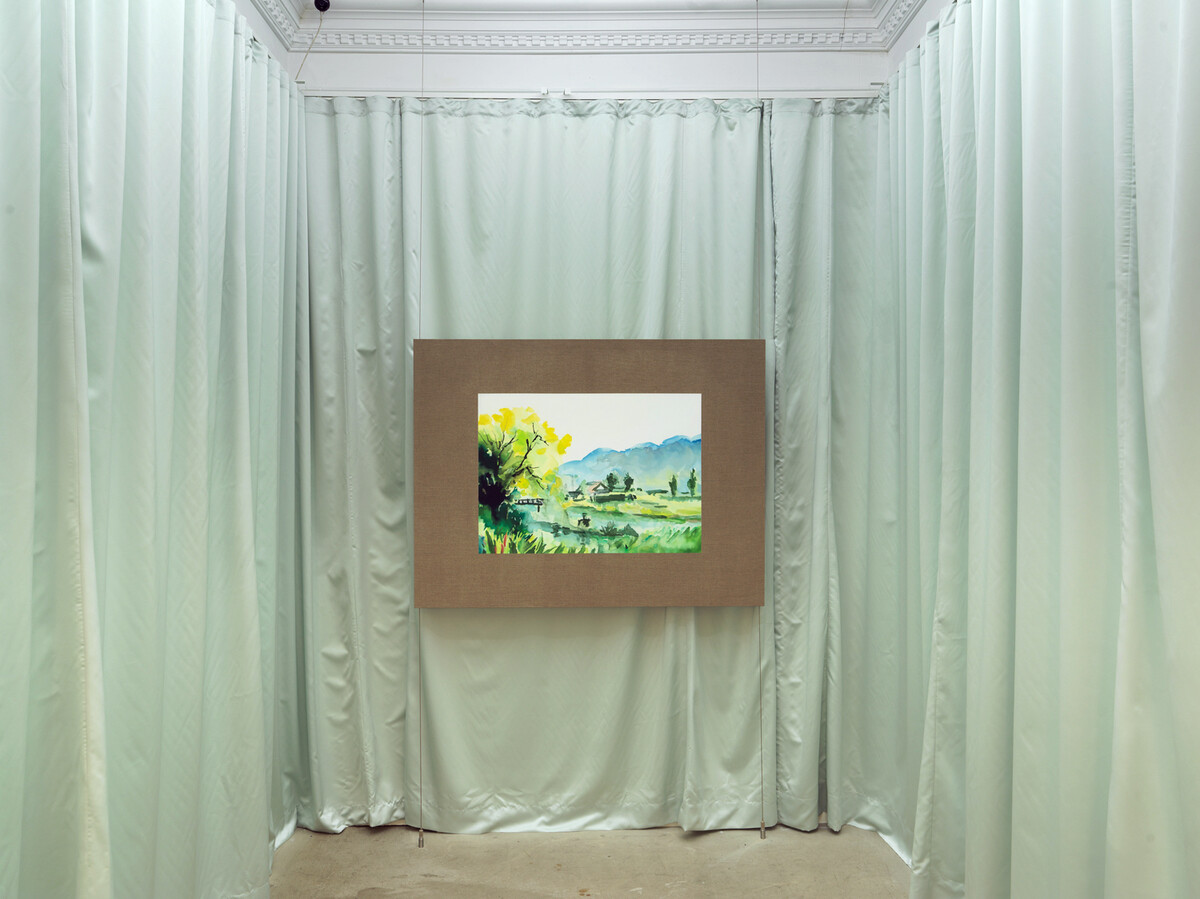
Mika Horibuchi’s inaugural solo exhibition at 56 HENRY is divided into two distinct segments: the First Place Award Selection Premiere at 56 Henry Street and the Fine Art Show Award Ceremony and Celebration at 105 Henry Street. The titles playfully reference a fictional art competition in which a watercolor painting has ostensibly won. The first part reveals the final winning work, while the second part serves as a presentation of a series of many preparatory studies that seemingly imply the existence of significant history and a fictional context that led to the creation of the primary piece, an evocative Japanese landscape, and its newly earned prestige.
Continuing her approach from previous exhibitions, Horibuchi meticulously attends to the installation and the environments surrounding her paintings. Together, they construct a stage set, an alternate reality that beckons viewers to immerse themselves. At the 56 Henry space, mint green silk curtains envelop the walls, providing a backdrop for the work A Bridge Crossing Tōjō River in Watercolor. Despite its title suggesting a watercolor execution, the piece is a sizable oil painting (42 x 55 in) on linen. Depicting the Tōjō River near Hiroshima, Japan, the painting features the river, a bridge, a rustic landscape, and a house nestled against a backdrop of mountains. A scene familiar to much of rural Japan and the hometown of Horibuchi’s grandmother, who created the original watercolor image.

At 105 Henry, the exhibition design created partially in collaboration with artist Dan Rizzo-Orr, is equally intricate, featuring wallpaper that mimics a large curtain in a “trompe-l’œil” style based on the historical drapery patterned wallpaper first produced by the French manufacturer Robert Caillard.
This space unveils a series of preserved sketches in pencil, pen, and permanent markers, purportedly created as preliminary studies leading to A Bridge Crossing Tōjō River in Watercolor, suggesting a skewed narrative chronology. Additionally, a smaller oil painting on linen, reminiscent of a photo album snapshot page, is displayed with painted corners appearing to be self-adhesive photo holders, with a second photo missing and indicated by four painted photo corners over a rectangle of less darkened linen. The painting bears the date “2018/03/14” in the bottom right corner. Suggestive of a physically tangible printed photograph taken with a point-and-shoot digital camera, the printed date indicates one of three critical timestamps: the date that Horibuchi’s grandmother painted the watercolor, the date on which her finished watercolor was photographed, and the date on which the painting currently on display was completed. The exhibition chronicles the pretend process of creating a painting, from initial studies and sketches to the final finished work, and finally arrives at a prestigious juried art show to secure the title of first-place winner. This honor culminates in a celebratory award ceremony and reception presented in partnership with Sachi Co. and several other fictional sponsors. The work is now enshrouded with imposed fandom, bearing a new air of respect, importance and value, success and popularity. Horibuchi deliberately leaves it to the viewers to decide whether the presentation reflects reality or if they are witnessing an elaborate narrative performed and installed before their eyes.

